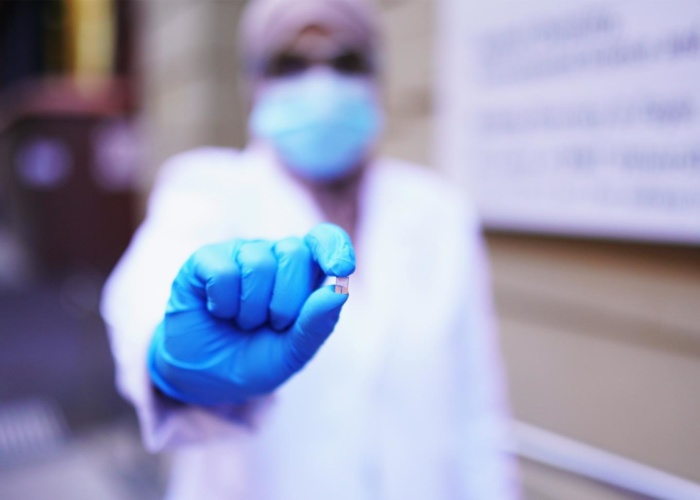
The sensor is said to produce ‘ultra-precise’ results at room temperature, detecting hydrogen leaks before they pose safety risks and could also measure small amounts of gas on people’s breath - a potentially useful tool in the diagnosis of gut disorders.
Commercial hydrogen sensors work at temperatures of 150 degrees C or higher, but the prototype developed by the RMIT team has been made up of tiny spheres called photonic or colloidal crystals. According to researchers, the hollow shapes are similar to minuscule bumps found on the surface of butterfly wings and are ‘ultra-efficient’ at absorbing light. This allows the sensor to draw all the energy it needs to operate from a beam of light, rather than heat.
The team’s findings, published in the journal ACS Sensors, suggest that the sensor can detect hydrogen at concentrations from as little as ten parts per million molecules (for medical diagnoses) to 40,000 parts per million (the level where gas becomes potentially explosive).
Hydrogen technologies need pipeline of graduate talent
“Hydrogen has the potential to be the fuel of the future but we know safety fears could affect public confidence in this renewable energy source,” said co-lead researcher Dr Ahmad Kandjani. “By delivering precise and reliable sensing technology that can detect the tiniest of leaks, well before they become dangerous, we hope to contribute to advancing a hydrogen economy that can transform energy supplies around the world.”
To make the sensor, an electronic chip is covered with a thin layer of photonic crystals and a titanium palladium composite. When hydrogen reacts with the chip, the gas is converted into water, creating an electric current. By measuring the magnitude of the current, the sensor can tell how much hydrogen is present.
PhD researcher and first author Ebtsam Alenezy said the sensor was safer and cheaper to run than commercial hydrogen sensors. “Having a consistent structure, consistent fabrication quality and consistent results are vital - and that's what nature has delivered for us through these bioinspired shapes.
“The well-developed fabrication process for photonic crystals also means our technology is easily scalable to industrial levels, as hundreds of sensors could be rapidly produced at once.”
While many commercial sensors struggle in the presence of nitrogen oxide, the new sensor is said to be ‘highly selective’ and able to accurately isolate hydrogen from other gases.
It is hoped that the new chip could be integrated into a hand-held device to deliver instant results in the context of medical diagnosis and monitoring. A provisional patent application has been filed for the technology, and the team now hope to collaborate with manufacturers of hydrogen sensors, fuel cells, batteries and medical diagnostic companies to commercialise the sensor.





Red Bull makes hydrogen fuel cell play with AVL
Formula 1 is an anachronistic anomaly where its only cutting edge is in engine development. The rules prohibit any real innovation and there would be...